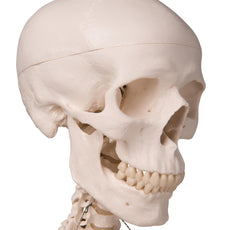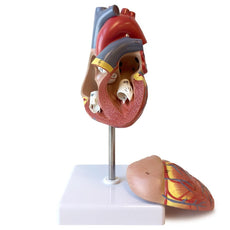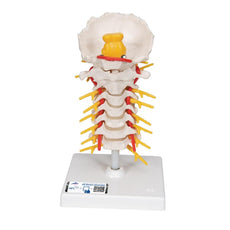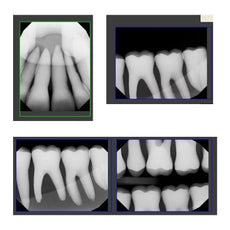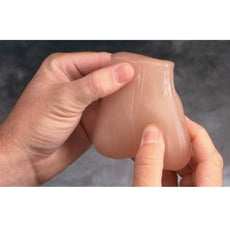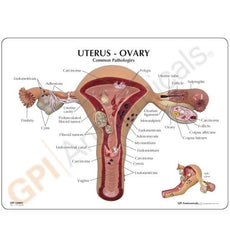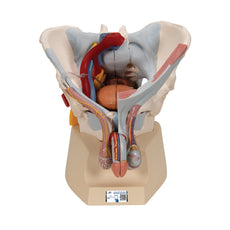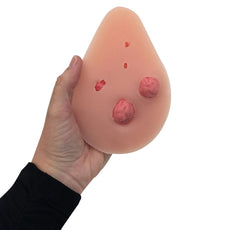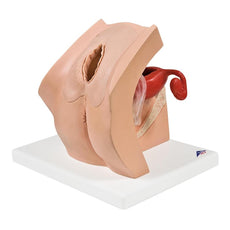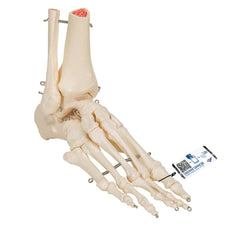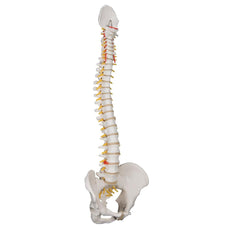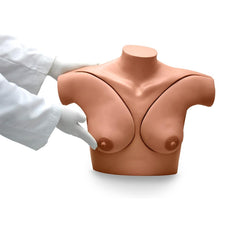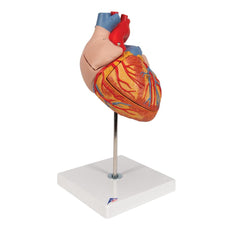Your shopping cart is empty.
3D Printed Pyonephrosis
Item # MP2096Need an estimate?
Click Add To Quote

-
by
A trusted GT partner -
3D Printed Model
from a real specimen -
Gov't pricing
Available upon request
3D Printed Pyonephrosis
Clinical History
A 38-year old female presents with severe nausea, vomiting, fevers and rigors.
She has a history of recurrent urinary tract infection over the past 6 months. She has required several courses of
oral antibiotics, and one admission for IV antibiotics. Blood tests show raised inflammatory markers. Urinalysis is
positive for white blood cells (WBC). A CT scan shows unilateral left hydronephrosis and pyelonephritis. She fails
to respond to conservative treatment, and undergoes a nephrectomy. She makes a complete recovery.
Pathology
This is the patient’s left nephrectomy specimen. The kidney has been sliced to display
the cut surface. The pelvis and calyces are greatly dilated, and contain remnants of yellow pus. There is
considerable fibrosis of the renal parenchyma. In the mid-zone near the lateral border, there is a hemorrhagic
necrotic area 35 x 12 mm in diameter containing pus. There are two similar small hemorrhagic necrotic areas visible
on the capsular surface. These lesions are probably continuous with the lesion seen on the cut surface, likely to be
caused by haemorrhage into an abscess cavity. This lesion would have resulted in a perinephric abscess.
Further Information
Pyonephrosis occurs when there is an obstruction within the upper urinary
tract and pyelonephritis. Debris of infection, WBC and bacteria collect in the obstructed kidney, resulting in a
hydronephrotic kidney that is filled with pus. A staghorn calculus usually forms in association with chronic or
recurrent infection as a consequence of the more alkaline urinary pH caused by the bacterial
infection.
Pyonephrosis is a rare condition. Risk factors for development include immunosuppression, diabetes and
anatomical urinary tract obstructions e.g. urinary tract strictures, horseshoe kidneys, tumours, urinary calculi.
Clinical presentation can consist of vague symptoms but may include constitutional symptoms of sepsis, flank pain,
haematuria, dysuria and pyuria. A grossly nephrotic kidney may be palpable on palpation of the abdomen. Pyuria will
be present on urinalysis. Radiological diagnosis can be made using CT investigations usually but also Ultrasound or
MRI looking for evidence of urinary tract obstruction and pyelonephritis.
Treatment will depend on the cause of the obstructing lesion. Emergent treatment involves drainage of the purulent build up within the kidney. This is performed by urology or interventional radiologists via percutaneous or retrograde ureteral stents to relieve the obstruction and drain the pus. Further surgical treatment will depend on the cause of obstruction. Antibiotic therapy is required for treatment of underlying infection or sepsis. If left untreated complications such as florid sepsis, xanthogranulomatous pyelonephritis, renal or perinephric abscess formation or fistula to pleura, colon or duodenum may occur.
Download: Handling Guidelines for 3D Printed Models
Handling Guidelines for 3D Printed Models
GTSimulators by Global Technologies
Erler Zimmer Authorized Dealer
The models are very detailed and delicate. With normal production machines you cannot realize such details like shown in these models.
The printer used is a color-plastic printer. This is the most suitable printer for these models.
The plastic material is already the best and most suitable material for these prints. (The other option would be a kind of gypsum, but this is way more fragile. You even cannot get them out of the printer without breaking them).The huge advantage of the prints is that they are very realistic as the data is coming from real human specimen. Nothing is shaped or stylized.
The users have to handle these prints with utmost care. They are not made for touching or bending any thin nerves, arteries, vessels etc. The 3D printed models should sit on a table and just rotated at the table.










